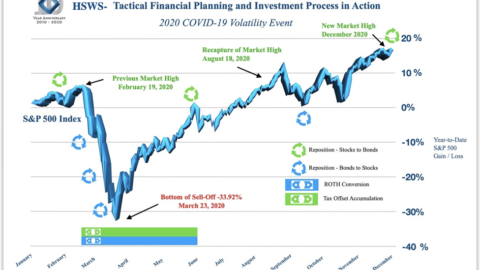The Fall Harvest
Tax Harvesting: Is It For You?
By Allie (DeYoung) Schmidt, Financial Advisor, CFP®, CPA
 The leaves are changing and the days are getting shorter…it’s hard to believe, but fall is officially here! This year, in addition to picking the last apples and getting all the tomatoes inside, let’s talk about tax loss or gain harvesting before the end of the year.
The leaves are changing and the days are getting shorter…it’s hard to believe, but fall is officially here! This year, in addition to picking the last apples and getting all the tomatoes inside, let’s talk about tax loss or gain harvesting before the end of the year.
Harvesting long-term capital gains can be an overlooked year end strategy, but depending on your tax bracket, may be something to consider. The long term capital gains rate in 2016 remains a relative bargain. For most investors the rate is just 15% and the maximum long term rate is 20%, if you’re in the top tax bracket. That is still relatively low when you consider that the top federal ordinary income tax rate is 39.6% (ordinary tax rates apply to short-term capital gains). Also, investors falling into the 10% and 15% ordinary income tax brackets may be able to take advantage of the 0% tax rate on long-term capital gains. So, in some scenarios, it may make sense to harvest some gains this year as well.
On the other side of the coin, and a concept you might be familiar with, is harvesting tax losses. Tax loss harvesting is the ultimate example of making lemons into lemonade and seeing the glass half full. It is basically selling investments that are currently at a loss in order to realize the loss in the current tax year for tax-saving purposes. You are able to offset an unlimited number of gains with losses and can write off an additional $3,000 loss against income. If you have losses above $3,000, you’re able to carry them forward for an unlimited amount of time and offset against gains in future years. 2016 has been a volatile year with different asset classes reacting in very different ways, so there may be some real opportunity here.
Do you want to stay in the current investment or sector, but still recognize the gain/loss? You may be able to do this by selling an investment, taking the gain/loss, and investing in something similar to stay in the sector but still take the gain/loss. You can’t sell a specific stock or investment and immediately purchase the same one because we run into the Wash Sale Rule, which is an IRS rule that prohibits a taxpayer from claiming a gain/loss on the sale of a security, and within 30 days before or after the sale, buying stock in the same company (or in a substantially identical security).
So, grab your October statement, cuddle up by the fire with your pumpkin spice latte, and consider if you should implement one of these strategies to manage your tax liability as we close the books on 2016.
This information is not intended to be a substitute for specific individualized tax advice. We suggest that you discuss your specific tax issues with a qualified tax advisor. Because of their narrow focus, sector investing will be subject to greater volatility than investing more broadly across many sectors and companies. Stock investing involves risk including loss of principal. The opinions voiced in this material are for general information only and are not intended to provide specific advice or recommendations for any individual. All performance referenced is historical and is no guarantee of future results.










